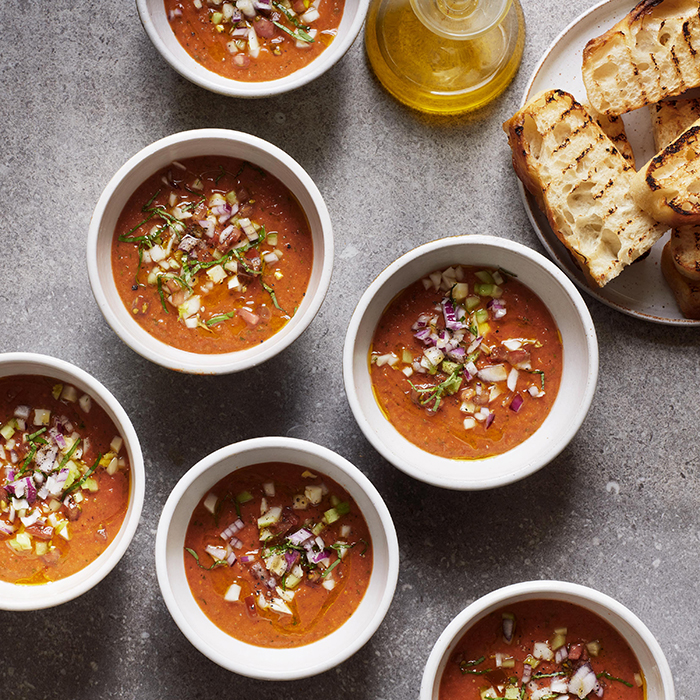Essential ingredients: tomatoes
Author: Stewart Turner

Tomatoes are one of the kitchen staples during the summer months, but I recall when I first started at Berry Bros. & Rudd one of the Events team telling me that tomatoes are notoriously difficult to pair with wine due to their acidity. It’s something I still bear in mind, although – after over a decade writing menus to pair with wine – I’m not sure it’s necessarily true. Raw tomatoes are definitely tricky, but warmed, cooked or dressed that natural acidity can be tempered; it’s all about balance really.
In the kitchens at No.3 St James’s Street, we use heirloom tomatoes or heritage as we call them in the UK. They are open-pollinated, non-hybrid, multicoloured varieties that were how tomatoes used to be. These forebears have less acidity and are slightly sweeter, lacking a genetic mutation that gives tomatoes a uniform red colour.
Since the 1940s the food industry has favoured a hybrid which is a standardised plump, red, round fruit that we see today; these have a longer shelf life and are more disease-resistant, but unfortunately this comes at a cost to flavour. If you can seek out heritage tomatoes, they will make any salad or dish – including this gazpacho – even better.
- 1kg heritage tomatoes
- 100g piquillo peppers
- Half a cucumber – peeled
- 20g red onion
- 20g basil
- Half a clove of garlic
- Sherry vinegar, to taste
- Sea salt and Espelette pepper
- 100g focaccia (or any excess sourdough) – torn into chunks
- Extra virgin olive oil
For the garnish:
- 100g heritage tomatoes – diced
- 50g cucumber – peeled and diced
- 100g fennel – diced
- Extra virgin olive oil
- Half a red onion – peeled, finely diced and rinsed in cold water
- Salt and pepper
- 10 basil leaves – chiffonaded
Halve the tomatoes and cucumber. Cut the onion into large chunks. Cook the tomatoes, cucumber, onion and peppers on the barbecue or in a grill pan, until well coloured and beginning to char. Set aside to cool.
Place the cooked vegetables in a large container with the rest of the ingredients, a good glug of olive oil and season well. Place in the fridge for a few hours or overnight to marinade and let the flavours develop.
Blend until smooth. If it’s a little thick, add a little tomato juice and another glug of olive oil, until you reach a consistency you like. Taste and adjust the seasoning as necessary. Chill again until it’s super cold.
Mix all the ingredients for the garnish in a bowl and season well. Add a good glug of olive oil, divide between six bowls and pour over the chilled gazpacho, enjoyed with some grilled focaccia.
What to drink: As Stewart points out, tomatoes are not necessarily the easiest to pair with wine. When raw, you need a wine with plenty of zip to match the fruit’s natural acidity; cooking them tempers their flavour, and here you’ve got the smoky edge of the barbecue in the mix, alongside the piquancy of garlic. For standard gazpacho, we would instantly go for a dry, saline taste of Andalusia with Fino or Manzanilla Sherry, or a vibrant Verdejo (this one from top talent Telmo Rodríguez is particularly good). Here, however, we can imagine little better than a glass (ok, bottle) of Amontillado enjoyed leisurely over one of the season’s first al fresco lunches.



Very interesting